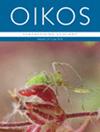结合生物能和运动模型,更好地了解干扰对种群的影响
IF 3
2区 环境科学与生态学
Q2 ECOLOGY
引用次数: 0
摘要
我们建立了动态生物能模型,以研究对人为干扰事件的行为反应可能如何影响三种海洋哺乳动物(港湾鼠海豚、灰海豹和港海豹)的种群动态,这三种哺乳动物具有截然不同的生活史特征(资本繁殖者与收入繁殖者)和运动行为(居留与游牧)。我们利用这些模型来分析个体生命率如何受到干扰概率和行为反应持续时间差异的影响,同时考虑到模型参数的不确定性和行为的异质性。然后,利用个体运动模型的输出结果和遥测数据来确定不同物种、个体和地理位置的暴露概率可能会有什么不同。然后,我们演示了如何将这些估计的暴露概率转化为干扰概率。为了说明问题,我们模拟了与一系列干扰事件相关的能量同化暂时下降的潜在影响,这些干扰事件可能会在海上风力发电厂建设过程中真实发生。后代饥饿死亡率是受这些干扰事件影响最大的生命速率。应将监测死亡率作为标准做法,以便尽早发现种群的反应。对个体生命率的预测影响取决于物种的运动行为以及假定模拟施工活动发生地的动物可能密度。这些影响的大小还主要取决于假定的能量同化减少的持续时间。目前还没有对这一变量的直接估算,但我们提出了一些估算方法。如果有足够的信息来确定组成模型的参数,所述方法可扩展到其他物种和活动。不过,我们强调需要考虑个体间的异质性和许多模型参数值的不确定性。本文章由计算机程序翻译,如有差异,请以英文原文为准。
Combining bioenergetics and movement models to improve understanding of the population consequences of disturbance
We developed dynamic bioenergetics models to investigate how behavioural responses to anthropogenic disturbance events might affect the population dynamics of three marine mammal species (harbour porpoise, grey seal and harbour seal) with contrasting life-history traits (capital versus income breeders) and movement behaviour (resident versus nomadic). We used these models to analyse how individual vital rates were affected by differences in the probability of disturbance and the duration of any behavioural response, while taking account of uncertainty in the model parameters and heterogeneity in behaviour. The outputs of individual movement models and telemetry data were then used to determine how the probability of exposure might vary among species, individuals, and geographical locations. We then demonstrate how these estimated probabilities of exposure can be translated into probabilities of disturbance. For illustrative purposes, we modelled the potential effects of a temporary decrease in energy assimilation associated with a series of disturbance events that might realistically occur during the construction of an offshore windfarm. Offspring starvation mortality was the vital rate that was most affected by these disturbance events. Monitoring of rate should be considered as standard practice so that populations responses can be detected as early as possible. Predicted effects on individual vital rates depended on the species' movement behaviour and the likely density of animals where the modelled construction activity was assumed to take place. The magnitude of these effects also depended critically on the assumed duration of the reduction in energy assimilation. No direct estimates of this variable are currently available, but we suggest some ways in which it could be estimated. The described approach could be extended to other species and activities, given sufficient information to parameterise the component models. However, we emphasise the need to account for among-individual heterogeneities and uncertainties in the values of the many model parameters.
求助全文
通过发布文献求助,成功后即可免费获取论文全文。
去求助
来源期刊

Oikos
环境科学-生态学
CiteScore
6.20
自引率
5.90%
发文量
152
审稿时长
6-12 weeks
期刊介绍:
Oikos publishes original and innovative research on all aspects of ecology, defined as organism-environment interactions at various spatiotemporal scales, so including macroecology and evolutionary ecology. Emphasis is on theoretical and empirical work aimed at generalization and synthesis across taxa, systems and ecological disciplines. Papers can contribute to new developments in ecology by reporting novel theory or critical empirical results, and "synthesis" can include developing new theory, tests of general hypotheses, or bringing together established or emerging areas of ecology. Confirming or extending the established literature, by for example showing results that are novel for a new taxon, or purely applied research, is given low priority.
 求助内容:
求助内容: 应助结果提醒方式:
应助结果提醒方式:


